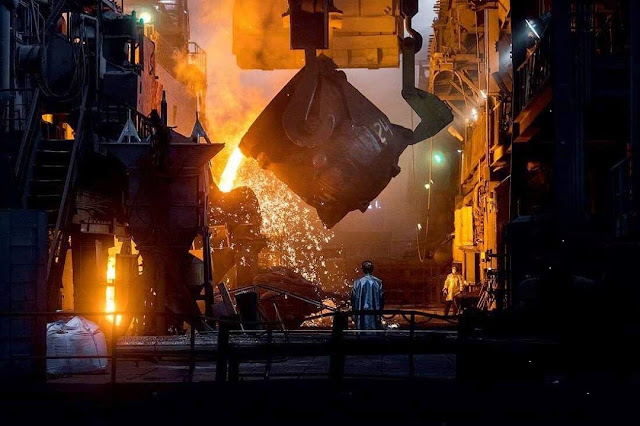Do you know what an electric arc furnace is? In fact, electric arc furnaces come from tools used to make steel. There are many types of electric arc furnaces. Different types of electric arc furnace steelmaking methods are different. A DC electric arc furnace is a steel-making electric arc furnace that is powered by a DC power source. So what are the advantages of DC electric arc furnace? Today I will introduce the advantages of DC electric arc furnace.
It is the same as AC electric arc furnace, which uses the arc generated between the electrode and the charge (or molten pool) to generate heat, so as to achieve the purpose of melting, and can be used to melt steel or alloy.
Compared with the traditional AC electric arc furnace, the main advantages of the DC arc furnace are:
(1) The arc is stable and concentrated, the molten pool is well stirred, the temperature distribution in the furnace is uniform, and the erosion of the furnace lining is small;
(2) The current and voltage fluctuations are small, the impact on the power grid is reduced, and the cable life is extended accordingly;
(3) Less electrode loss, 50% less electrode consumption per ton of steel than AC arc furnace. The performance of the DC arc furnace is better than that of the AC arc furnace, but it has been suffering from the failure to obtain a high-power DC power supply, which has prevented it from developing for a long time.
With the application of thyristor technology, the manufacturing technology of high-power DC power supply equipment has been solved, so in the late 1970s, the metallurgical industry re-launched the research of DC arc furnaces, and the technical problems of construction and use of DC arc furnaces in the early 1980s have been solved one by one. The world's first DC electric arc furnace was built and put into production at the Bush Steel Plant in Germany in 1982. In the next six or seven years, the United States, France, Italy, Japan and other countries have successively rebuilt or built their own DC electric arc furnaces from 30t to 60t.
In 1989, Tokyo Steel Corporation of Japan built the largest DC arc furnace with a capacity of 130 tons. In recent years, many DC arc furnaces have been built and put into production in various countries around the world, with capacities ranging from 60t to 180t. In 1989, China Taiyuan Machinery Foundry developed China's first small DC electric arc furnace and put it into production. In the same year, a 2000kVA submerged arc DC electric arc furnace in Xuanhua Ferroalloy Plant was put into production, used to produce ferrosilicon, ferromanganese, calcium silicon and other ferroalloys. Since the beginning of the 1990s, DC arc furnaces have received more and more attention. Shanghai No. 3 Steel Plant, Great Wall Steel Plant, Qiqihar Steel Plant, Jiangyin Yanshan Steel Plant, Shanghai No. 1 Steel Plant have introduced large-scale DC arc furnaces with a capacity of 80 ~ 100t. Baoshan Iron and Steel (Group) Company introduced a set of 150t DC electric arc furnace equipment with double furnace shells (one power supply) from France.
There is only one electrode above the DC electric arc furnace, which is the negative electrode and the bottom electrode is the positive electrode. Its power supply system is different from that of AC arc furnace. It is equipped with rectifier and reactor. A contact is installed on the furnace bottom to form a current circuit. The maintenance and service life of the contact are the key problems in the operation of the DC arc furnace. Generally, the copper plate is placed on the furnace bottom steel plate to facilitate conduction. Three layers of magnesia carbon bricks are built on the copper plate, and then refractory materials are knotted on it.
More Articles You May Be Interested In:
1. Furnace Transformer – Electric Arc Furnace



This comment has been removed by the author.
ReplyDelete